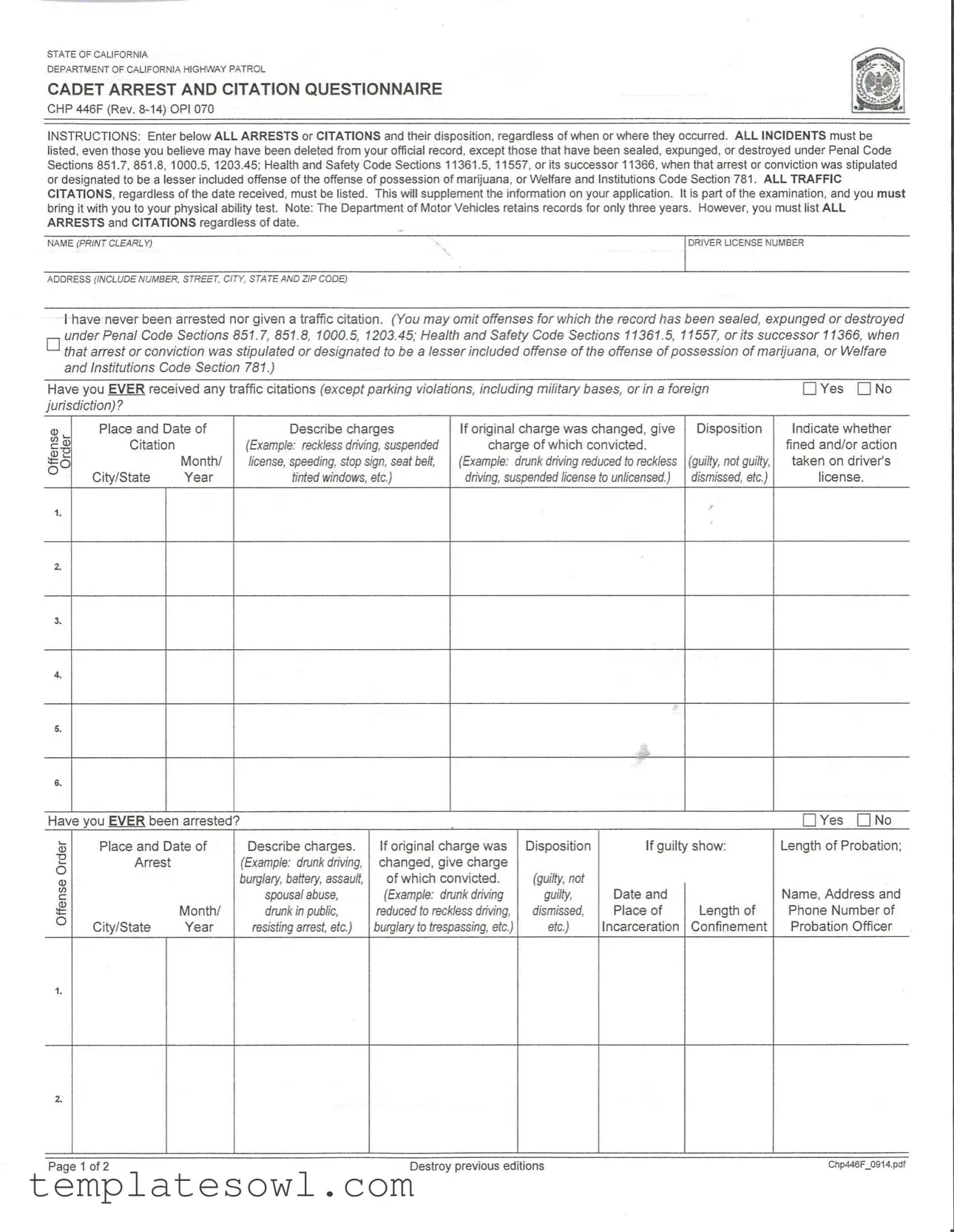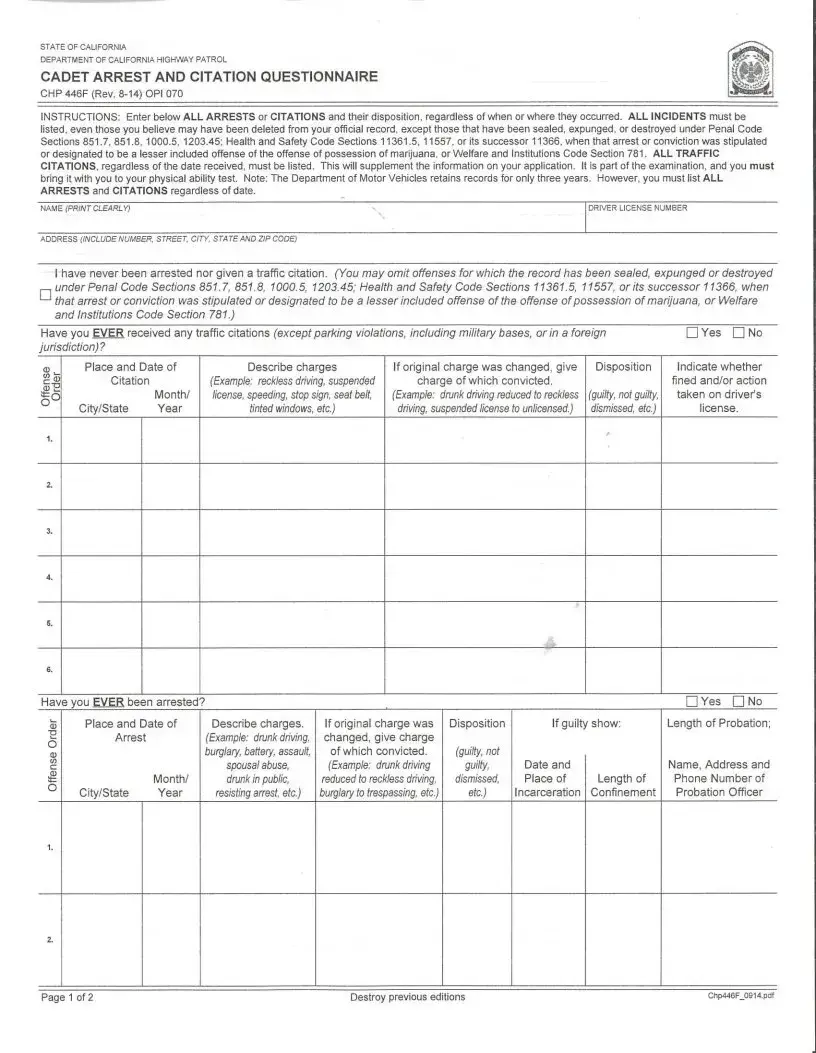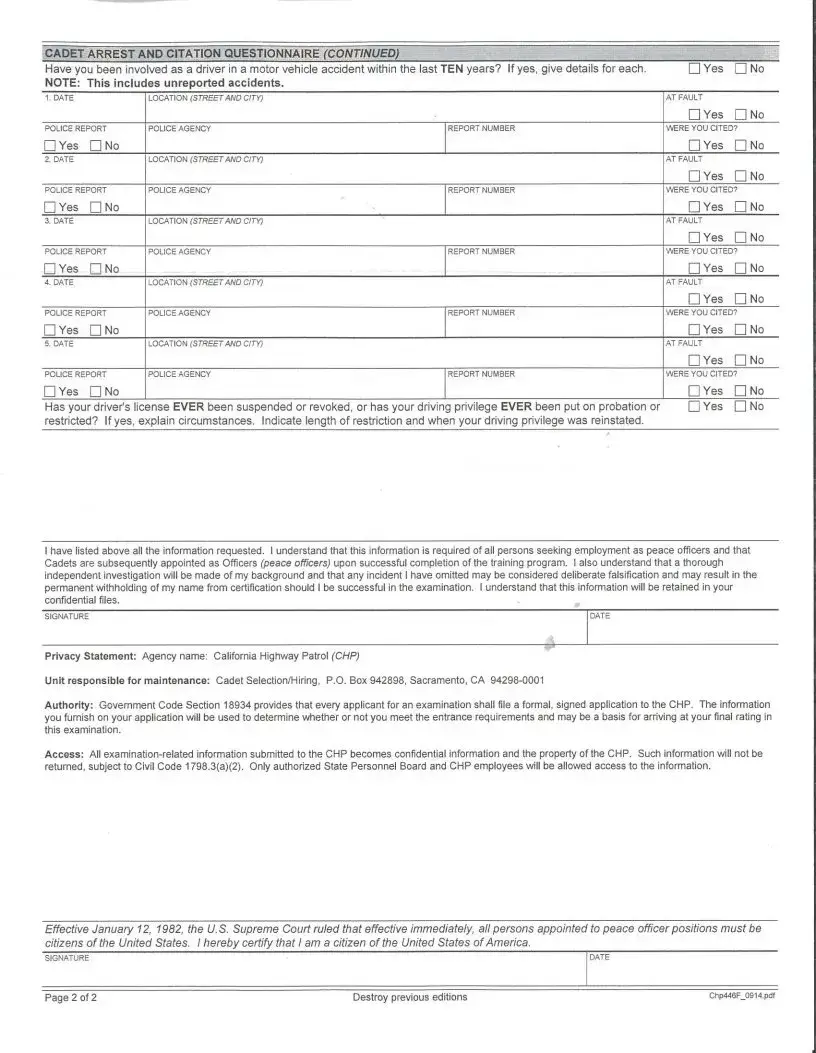What is the purpose of the CHP 446F form?
The CHP 446F form is a questionnaire for cadets applying to the California Highway Patrol. Its primary purpose is to collect comprehensive information about a candidate's arrests and traffic citations. All incidents must be listed, even if they may not appear on an official record, except for those that have been sealed, expunged, or destroyed. This documentation is crucial for the examination process and must be presented during the physical ability test.
What information needs to be included on the form?
Applicants must provide a detailed account of all arrests and traffic citations. This includes the date and location of each incident, a description of the charges, and the final disposition (such as guilty, not guilty, or dismissed). Significant traffic incidents, including unreported accidents, must also be detailed. Furthermore, candidates should indicate any changes to original charges and provide information about probation or license restrictions if applicable.
What happens if I have had an arrest or citation but my record is sealed or expunged?
If an arrest or citation has been sealed, expunged, or destroyed under relevant Penal or Health and Safety Codes, you do not need to include it on the CHP 446F form. However, all other incidents, regardless of when they occurred, must be reported fully. It is essential to ensure that complete and accurate information is provided to avoid any issues during the background investigation process.
Why is it important to provide complete and accurate information?
Providing thorough and accurate information on the CHP 446F form is critical. The California Highway Patrol conducts a detailed independent investigation of the background of all applicants. Omitting any incidents may be perceived as deliberate falsification. Such actions can have serious consequences, including the potential for being permanently barred from certification. The honesty reflected in this form impacts your eligibility as you pursue a career as a peace officer.


